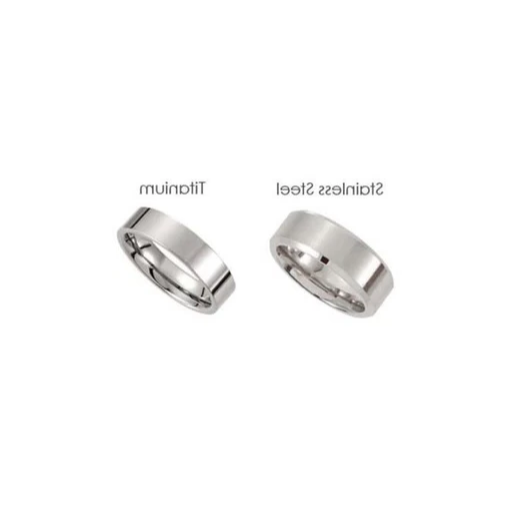When it comes to selecting materials for everyday items like jewelry, watches, and medical tools, stainless steel often stands out for its durability and sleek appearance. But for individuals with sensitive skin, a crucial question arises: can stainless steel trigger allergic reactions, or is it truly hypoallergenic? Understanding the intricate relationship between metals and skin sensitivities is essential, especially for those prone to discomfort or irritation. This article will provide a detailed exploration of whether stainless steel is a suitable choice for sensitive skin, what contributes to its hypoallergenic properties, and the key factors you should consider when selecting metal products.
What Makes Stainless Steel Hypoallergenic?
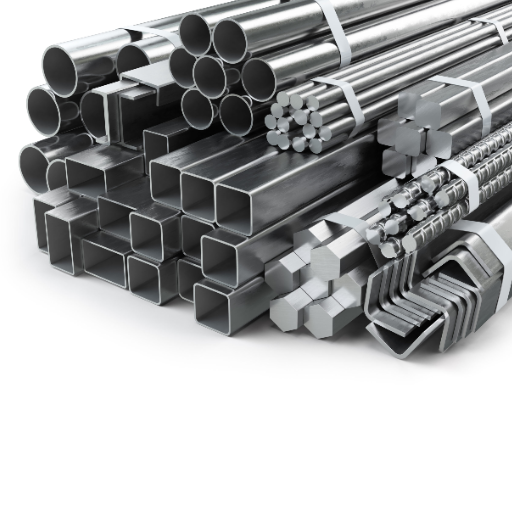
Understanding Nickel Content in Stainless Steel
This metal, often problematic for people with sensitive skin, is key in many stainless steel alloys. Surgical steel is an alloy of stainless steel known for its hypoallergenic properties. Both 316 and 316L contain low amounts of nickel, but 316L, which is often called surgical steel, is less prone to skin reactions.
The hypo allergenic properties of 316L are attributed to how tightly bound nickel is within the alloy and its corrosion resistance. This feature prevents nickel from coming in contact with the skin. Because of very little nickel leaching, 316L becomes a prime candidate for jewelry, timepieces, and other skin contact accessories.
Choosing alloys that are considered hypoallergenic makes it imperative to look for stainless steel that meets international standards of nickel release, for instance, imposed. With proper selection, people suffering from sensitive allergies can withstand their condition while maintaining the elegant look and multifunctionality of the speedy wear item.
How Chromium Contributes to Its Hypoallergenic Properties
Chromium is crucial in sharpening the hypoallergenic properties of stainless steel as it forms a passive oxide layer on the metal’s surface. This protective layer, referred to as passive film, is almost impermeable to rust and prevents the corrosion of the release of nickel ions, a common allergic reaction culprit. In the absence of chromium, stainless steel would be more vulnerable to environmental attacks, which would degrade the surface and expose nickel. For sensitive people, this would cause skin irritations.
Passive stainless steels require at least 10.5% chromium by weight to form and retain the passive layer adequately. Chromium readily undergoes an oxidation reaction with O2 in air and water to produce a stable thin layer of chromium oxide. This oxide barrier is self-repairing: when scratched, damaged, or abraded, chrome in the alloy will always react with oxygen, which repairs the damaged layer. This peculiar characteristic guarantees stainless steel’s allergen exposure safety while still maintaining a durable surface for years, for physical wear and abrasion.
Chromium’s presence improves corrosion resistance, but also plays a major role in making the alloy safe for people who have metal allergies. This means that chromium is an essential component when it comes to formulating a skin safe materials for varied uses.
Differences Between 316L Stainless Steel and Other Types
316L stainless steel is a lower-carbon version of 316 stainless steel. It is best known for its strong resistance to corrosion and great strength in challenging environments. The lower carbon content of 316L lowers the chances of carbide precipitation during welding. This makes it ideal for uses that require heavy fabrication. This also improves resistance to inter-granular corrosion, which is the corrosion along the grain boundaries after enduring heat and prolonged exposure to high temperatures.
When compared to 304 stainless steel, 316L performs much better in highly saline or chemically aggressive environments. This is due to the added molybdenum, which improves pitting and crevice corrosion, particularly in places rich with chlorides. While 316L is a bit more costly than 304 stainless steel, it is more favorable for marine engineering, pharmaceuticals, and food processing industries that need harsh environment reliability because of its value 316L provides.
Unlike Ferritic or martensitic stainless steels 430 or 410, 316L showcases remarkable flexibility and corrosion resistance. Even though 430 is cheap, it corrodes in harsh environments and lacks the strength needed for critical applications. Similarly, 410 martensitic stainless steel has limited applications in sensitive environments due to prioritizing its corrosion resistance over hardness and wear resistance. These factors make 316L an unmatched and highly versatile stainless steel for applications that demand heightened safety and dependability.
Can Stainless Steel Jewelry Cause Skin Allergies?
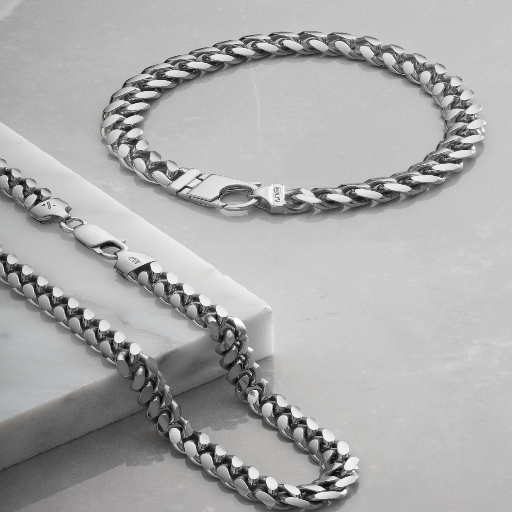
Common Allergens in Metal Jewelry
The contact dermatitis that occurs from metal jewelry allergies is often a result of the presence of nickel. Not only does nickel serve a greater purpose, like improving the durability of alloys, but it is also cheaper. Unfortunately, it causes several issues as well. Some estimates claim that 10 to 20 percent of the world’s population suffers from nickel allergies, and, due to jewelry and accessories, women are more susceptible.
The allergens do not stop there. Cobalt and chromium skyrocketed to popularity among jewelry manufacturers because of their purpose in strengthening the jewelry. Jewelry with chromium incorporated, which is usually added into stainless steel, shows anti-corrosive properties but can cause skin allergies if not properly embedded. Cobalt is another culprit which is at risk of triggering sensitization on already sensitive skin.
In order to combat these issues, brands now offer hypoallergenic alternatives such as 316L stainless steel, sterling silver, or titanium. The presence of portion metals that are known to cause allergies are minimal, helping the wearer with sensitive skin. Furthermore, alloys that meet ASTM F2999 compliance standards for jewelry materials add even further protection for the users.
Why Some People Experience Allergic Reactions
Allergic reactions to metals raise concerns due to an individual’s immune response perceiving some metal ions as threats. This is quite standard with metals like Nickel, which is one of the most common allergens featured in jewelry and used in day-to-day life. Metal alloys tend to let out Nickel ions when they are in contact with sweat or moisture, which leads to direct contact with the skin. These ions can deposit on the skin and unite with skin proteins, creating a complex alien to the body. As a result, immune cells are activated, causing inflammation, rashes, or itching.
Moreover, sociocultural factors such as increased exposure over time contribute to an individual’s increase in the prevalence of Nickel allergies. For instance, exposing body parts to Nickel compounds in earrings, watch bands, or even belts increases sensitivity over time in people who are already susceptible to contact dermatitis. It is estimated that about 10-20% of the people living in developed countries are thought to have some degree of sensitization to Nickel.
Other than nickel, potential allergens include cobalt and chromium. They tend to be a part of metal plating or alloys, which can worsen allergic reactions in sensitive people. Identification of specific metals causing such reactions and selection of hypoallergenic materials greatly minimize the chances of adverse responses, especially in patients with metal sensitivity.
Choosing Nickel-Free Options for Sensitive Skin
Proper material selection is essential in avoiding allergic reactions for people with nickel sensitivity. Nickel is frequently found in an array of day-to-day items, such as jewelry, clothing clasps, electronic gadgets, and even dental appliances. Thus, sensitive persons need to be selective to reduce the chances of prolonged exposure to nickel-contaminated items. Dermatologists and scholars buttress that products, “declared nickel free” are usually under some kind of law for restriction of nickel discharge and are therefore not liable to many cases of skin irritation.
Surgical-grade stainless steel, titanium, and niobium are suggested substitutes for those who have a nickel allergy. Take, for example, titanium, it is known that these materials are an ideal constituent in medical implants and high-grade jewelry because it has a biocompatible and non-allergic nature. Moreover, instead of metal, silicone, plastic, and fabric can be used in making accessories and wearable items, which broadens opportunities to escape metal allergens.
Another vital approach to controlling nickel sensitivity is the application of protective barriers or coatings. For instance, some commercial products enable consumers to strip down or uncover certain items to thoroughly check for traces of nickel. This makes the process a lot more informative than just an educated guess. People can simply put on transparent coatings such as nail polish or special metal protectants to limit direct skin contact with surfaces that exude nickel. The problem of contact dermatitis and other allergic reactions to nickel exposure is better controlled by combining the selection and design of materials with adequate testing, physical barriers, and careful protective options.
Exploring the Hypoallergenic Properties of 316L Stainless Steel

What Is 316L Stainless Steel?
316L stainless steel has many benefits for medical implants because of its excellent biocompatibility and mechanical properties. Withn this stainless steel alloy, the corrosion resistance is extreme and even the body’s highly oxidative environment would not enhance the rate of corrosion, metal ion release, or degradation, further aiding in non-reversible cell damage for erosion over time. Its biostability assures that there are no adverse inflammatory or immune responses, as this is crucial for the long enduring success of the implant.
Mechanically, 316L can maintain its strength when displaced, as its tensile strength is high, along with its ductility. These properties allow for the support of mechanical loads and accommodate the movement of the body. The material is best suited for orthopedic devices, vascular stents, and surgical instruments. Research has also continuously shown that 316L surpasses alloys that are the most frequently pitted and crevice-corroded, mainly due to the presence of bodily fluids.
Alongside advanced additive and precision machinces, their addition to custom patient-tailored designs broadens the needs that can be solved, as the implants can be more complex and contoured. 316L stainless steel has extensive research along with clinical trials which further emphasize its dependability, reaffirming the essential functions it serves in modern biomedical engineering.
Benefits of 316L for Medical Implants
316L stainless steel has outstanding advantages when it comes to medical implants, owing to its excellent biological acceptance along with its mechanical attributes. This alloy displays remarkable resistance to corrosion in lower oxidative conditions, for instance, the human body, and it reduces the chances of metal ion release or degradation over time. Because of its non-reactive nature, there is no hostile, inflammatory, or immune response, which is important in enabling the long-term success of an implant.
From a mechanical standpoint, 316L has high tensile strength and ductility which is needed to sustain bear mechanical loads and the dynamic movement within the body. This makes it highly suitable for orthopedic devices, surgical instruments, vascular stents and other surgical tools. Numerous studies have shown that 316L is greatly resistant to pitting and crevice corrosion, with some of fluids being incorporated into the body.
In addition, 316L is compatible with new methods of manufacturing, including additive and precision machining, and this ensures that complex and specific implant designs needed by a particular patient can easily be crafted. A vast range of clinical and other researches confirms that the use of 316L stainless steel incur low risks making it a backbone ingredient in biomedical engineering technologies.
How 316L Minimizes the Risk of Allergic Reactions
316L stainless steel is notable for its biocompatibility, which can be attributed to its low-carbon content as well as its high corrosion resistance. One of the main factors protective of allergic reactions is the slow rate of formation of a stable, protective oxide layer on the alloy’s surface. This passive layer, which consists largely of chromium oxide, greatly diminishes the amount of nickel and other potential leucotoxic substances that could be released to the surrounding tissues or fluids.
The high purity and refined composition of 316L also ensures that allergenic trace elements remain insignificant. The alloy’s chromium, molybdenum, and nickel components are well-balanced to enhance the material’s strength and resistance to corrosion without evoking adverse biological reactions. Research indicates that the rate of release of nickel ions from 316L stainless steel is considerably lower than that of other forms of stainless steel, which further mitigates the possibility of sensitization or other immune response reactions.
Clinical information validates the use of 316L in medical implants and devices due to its lower risk of hypersensitivity when compared to other materials. Improvements in surface treatment, including passivation and electropolishing, further improve the inertness of the material, making it more suitable for orthopedic plates and screws as well as cardiovascular stents. These materials, due to their excellent characteristics, remain crucial in reducing hypersensitivity in modern biomedicine.
Why Is Titanium Considered a Hypoallergenic Metal?
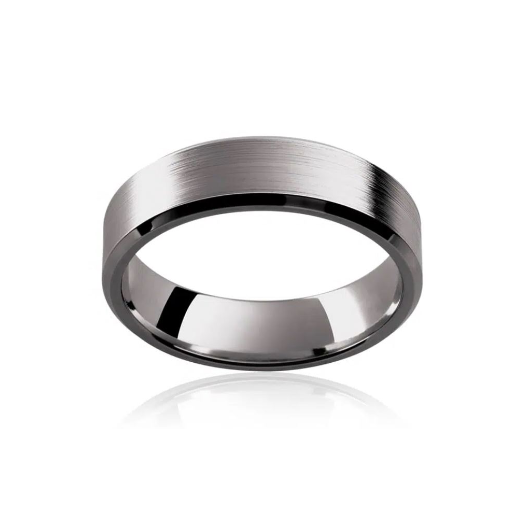
Comparing Titanium and Stainless Steel in Terms of Allergenicity
While being used in the medical field as well as in industries, both titanium and stainless steel have unique differences primarily in their allergy response induction potentials. Compared to alternatives, surgical titanium possesses greater biocompatibility, due to its resistance to corrosion and limited ionization. This property minimizes adverse hypersensitivity responses. Research indicates that titanium ions are biologically inactive and immune-agnostic, reinforcing their selection for patients with metal incompatibilities.
Contrarily, parts of stainless steel are made up of alloying elements like nickel and chromium, which can easily be released in corrosive environments. Of these elements, nickel is perhaps the single most common cause of contact dermatitis and metalloallergies. Although medical-grade stainless steel (316L, for example) does incorporate heightened levels of nickel, stabilities achieved through passivation techniques, some level of nickel release is always possible, especially in sensitive patients.
Patients with titanium implants encounter allergic responses at a significantly lower rate than patients with stainless steel implants. Research further highlights that titanium’s hypoallergenic characteristics make it better-suited for long-term implants in sensitive patients, including those with orthopedic and dental prosthetic hardware. Since titanium is chemically more stable and is bioinert, it has a distinct advantage in allergic safety compared to stainless steel.
Properties That Make Titanium Suitable for People with Sensitive Skin
With regards to sensitive skin or allergy issues, titanium is particularly advantageous due to its unique combination of characteristics. First, titanium is well-known for its bioinert property, which means that it does not provoke a negative, unwanted biological response when in contact with tissue or other fluids. This is, of course, going to be less aggravating in comparison to some other metals like nickel or cobalt, which are dermatologically known to trigger irritative responses.
Hypoallergenic characteristics are predominantly aided by the oxide layer of titanium. This layer, which forms naturally, is non-porous and non-externally abraded. Corrosion is resisted by this layer, and so is the leaching of foreign ions into adjacent tissues, which is extremely essential for the avoidance of skin sensitivities. Medical studies have confirmed the low allergenic reactivity value of titanium. This is especially true about metal hypersensitivity, wherein those who used titanium were found to be much less than those using stainless steel or plated alloys.
Another very important issue is the extreme strength-to-weight ratio of titanium, which permits its use in the production of light and strong components like medical implants and jewelry, both of which require minimal contact with the skin. Additionally, the resistance of titanium to deformation at temperatures will aid with the preservation of structural integrity, subjected to different environmental conditions, thus providing enhanced skin protection for women for prolonged wear.
Due to its exceptional chemical resistivity, biological compatibility, and inert character, titanium stands out as the best material for people with sensitive skin. This is beneficial in matters of safety and performance in various applications.
How to Choose the Right Type of Stainless Steel for Allergy Concerns?
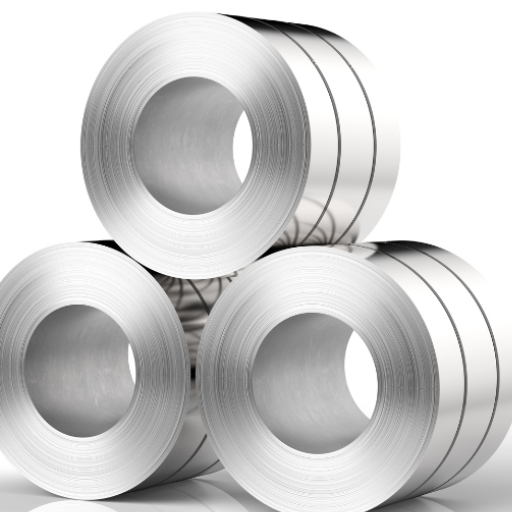
Understanding the Properties of Stainless Steel
Stainless steel is an alloy made mostly of iron and chromium and also includes nickel, molybdenum, and manganese, depending on the particular grade. The addition of chromium, usually in amounts of 10.5% or more, protects the surface of stainless steel as it passively forms an oxide layer which improves the corrosion resistance of the material. This protective coat is durable which prevents rust and degradation, and is why stainless steel is used in harsh environments.
Stainless steels are classified into several groups including asustenitic, ferritic, martensitic, duplex and precipitation-hardening grades. The most common types are austenitic stainless steels such as 304 and 316 grades because of their excellent corrosion resistance, weldablity, formability. Ferritic grades are more affordable, but they lack toughness and corrosion resistance when compared to austenitic steels. High strength and hardness are traits of martensitic stainless steels, but they have low corrosion resistance.
For people who have allergies, the nickel level found in stainless steel is of utmost importance. 316L austenitic stainless steels are very biocompatible and have a low rate of nickel elution, which makes them good for medical devices, jewelry, and other wearables. Knowing these specifics enables customers to select the right type of stainless steel for their requirements.
Considering the Amount of Nickel and Other Alloys
The traits of stainless steel, such as resistance to corrosion, tensile strength, and extreme temperature endurance, are influenced by its nickel composition. Take austenitic stainless steels, for example; they usually contain 8 to 14 percent nickel, which gives them high corrosion resistance and ductility. For projects where budget is the most important factor, ferritic or martensitic grades with little to no nickel can be used, but these versions have lower corrosion resistance.
The roles of other alloying components like molybdenum, chromium, and nitrogen are equally important. Molybdenum improves the resistance to pitting and crevice corrosion, particularly in chloride-heavy settings. This is evident in the 316 and 316L grades. The chromium ratio, ranging from 10.5% to 30%, is a must because it takes part in forming the passive oxide layer, which shields stainless steel from oxidizing. On the other hand, relatively smaller portions of nitrogen contribute positively to corrosion attacks and tensile strength.
Once the appropriate ratios of nickel and the other alloying parts are determined, manufacturers and consumers can fine-tune their decisions and expectations about performance, endurance, and budget.
Selecting Surgical Stainless Steel for Hypoallergenic Needs
Surgical stainless steel like 316L and 316LVM grades are specially made with low amounts of nickel to reduce allergic reactions. These grades possess lower amounts of leached nickel which makes them more compatible with sensitive skin. In addition, the presence of molybdenum in these alloys improves their resistance to pitting and crevice corrosion providing enduring integrity for medical surgical items and personal care products.
Research indicates that incorporating chromium is necessary in order to achieve hypoallergenic status while having high amounts of nickel for corrosion resistance (16-18% of chromium is standard). Producing surgical stainless steel also includes the process of electropolishing which refines the steel to a mirror-like finish; the smoother the surface, the less irritants can attach to it, making it biocompatible.
Understanding all of these factors allow suppliers to craft surgical stainless steel that pass medical and personal use standards while effectively merging all three aspects: Functionality, safety, and durability.
References
-
Carolily Blog: Is Stainless Steel Jewelry Safe For Those With Metal Allergies? – This source discusses the composition of hypoallergenic stainless steel and its suitability for individuals with metal allergies.
-
Artizan Joyeria: Is Stainless Steel Hypoallergenic? – This article explores the hypoallergenic properties of stainless steel, particularly higher grades like 316L, and their potential allergenic effects.
-
Catalogix: Is Stainless Steel Hypoallergenic? – This page provides insights into the nickel content in stainless steel and its implications for people with sensitive skin or allergies.
Frequently Asked Questions (FAQ)
Q: What does hypoallergenic mean in the context of metals?
A: Hypoallergenic means that a metal is less likely to cause an allergic reaction. It is often used to describe materials that are suitable for people with sensitive skin or allergies, such as those who may be sensitive to nickel.
Q: Are all types of stainless steel considered hypoallergenic?
A: Not all types of stainless steel are considered hypoallergenic. Many types of stainless steel contain nickel, which is a common cause of allergic reactions. However, grades like 316L have a lower nickel content and are less likely to cause allergic responses.
Q: Why might someone with a nickel allergy still react to stainless steel?
A: Although stainless steel is corrosion resistant and used in medical applications, some grades contain nickel and chromium. People with nickel allergies may experience an allergic reaction if the nickel content is too high.
Q: What stainless steel grade is best for sensitive skin?
A: Stainless steel grade 316L is often recommended for sensitive skin as it has a lower nickel content, making it less likely to cause allergic reactions. It is also widely used in medical applications due to its durability and resistance to corrosion.
Q: Can earrings made from stainless steel be suitable for sensitive ears?
A: Yes, earrings for sensitive ears can be made from hypoallergenic stainless steel grades like 316L. These are less likely to cause allergic reactions due to their lower nickel content.
Q: Is nickel always present in stainless steel?
A: While many types of stainless steel contain nickel, not all do. Some grades have a lower nickel content, which makes them more suitable for individuals with nickel allergies. It’s important to check the specific composition of the stainless steel grade used.
Q: How does chromium content affect the hypoallergenic nature of stainless steel?
A: Chromium content in stainless steel provides corrosion resistance and strengthens the metal. While chromium itself is not a common allergen like nickel, it contributes to the overall durability and suitability of stainless steel for sensitive skin when combined with low nickel content.
Q: What should people with metal allergies consider when choosing stainless steel products?
A: People with metal allergies should look for stainless steel products that are specifically labeled as hypoallergenic or made from grades with lower nickel content, such as 316L. It’s also beneficial to confirm that the manufacturer uses metals considered hypoallergenic.
Q: Are there any risks of allergic responses from using stainless steel in medical applications?
A: Stainless steel used in medical applications is typically chosen for its hypoallergenic properties and corrosion resistance. However, individuals with severe nickel allergies should consult with healthcare providers to ensure the materials used will not cause an allergic reaction.

